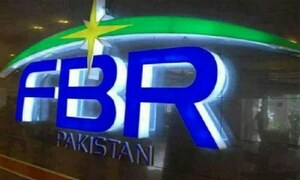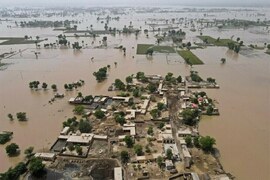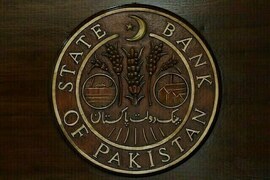 MUMBAI: India's benchmark 10-year bond yields rose to a one-month high on Tuesday after the central bank cut the proportion of government debt that lenders must hold, while casting doubt about future rate cuts after raising its inflation outlook.
MUMBAI: India's benchmark 10-year bond yields rose to a one-month high on Tuesday after the central bank cut the proportion of government debt that lenders must hold, while casting doubt about future rate cuts after raising its inflation outlook.
As widely expected, the Reserve Bank of India kept the country's main lending rate at 8.00 percent, while continuing to express its concerns about inflationary pressures.
The hawkish stance is expected to raise the stakes for the government to take measures to boost growth with actions such as attracting foreign investment and reducing its fiscal deficit.
The stakes have risen even more for the government as rainfall during the monsoon period have been lower than expected, further raising inflation prospects.
"The broad strokes of the post-policy comments are broadly similar to the ones expressed in June, with pressure to build on the government to at least undertake baby-steps towards fiscal consolidation," said Radhika Rao, an economist at Forecast Pte in Singapore.
The benchmark 10-year bond yield rose to as high as 8.28 percent from its 8.15 percent close on Monday, marking the highest yield for a 10-year bond since July 2. It ended the session at 8.24 percent.
Overnight indexed swaps surged, with the benchmark 5-year OIS rate up 10 bps to 7.10 percent from its previous close, while the 1-year rate rose 8 bps to 7.72 percent.
The RBI largely stuck to expectations in its policy review, though it did surprise markets by lowering the statutory liquidity ratio to 23 percent from 24 percent.
The SLR mandates the proportion of deposits that banks must hold in approved securities such as gold, cash, and government bonds. The cut is expected to improve liquidity, though its broader impact would likely be muted, analysts said.
"The cut in banks' statutory liquidity ratio doesn't make a difference. Credit growth has not picked up because rates are higher for corporates, and banks have asset quality issues," said A. Prasanna, a senior economist at ICICI Securities Primary Dealership.
Instead, the more lasting consequence could come after the RBI raised its wholesale price index inflation projection to 7 percent in the year ending in March 2013, from 6.5 percent.
The drought threatening the country could make it harder for the government to raise subsidised fuel prices, top policy adviser Montek Singh Ahluwalia told Reuters.
The monsoon is expected to be one of the many challenges facing Home Minister Palaniappan Chidambaram as he is widely expected to be named India's next finance minister.
Still, investors still believe the RBI will have to cut rates this year after its 50 basis points cut in April. Despite the surge on Tuesday, OIS swaps closed lower in July with the five-year rate down 6 basis points and the one-year rate down 10 basis points.
On another positive note for debt investors, the RBI reiterated that managing liquidity remains an important objective, and will respond to pressures including by purchasing bonds through open market operations.
Liquidity conditions have eased noticeably this month, with repo borrowings from banks repeatedly coming in within the RBI's comfort zone.
"The cut in banks' statutory liquidity ratio is a re-assurance that the RBI will remain true to its stance of maintaining adequate liquidity in the banking system," said Sachidanand Shukla, senior vice president and chief economist at Enam Securities in Mumbai.






















Comments
Comments are closed.